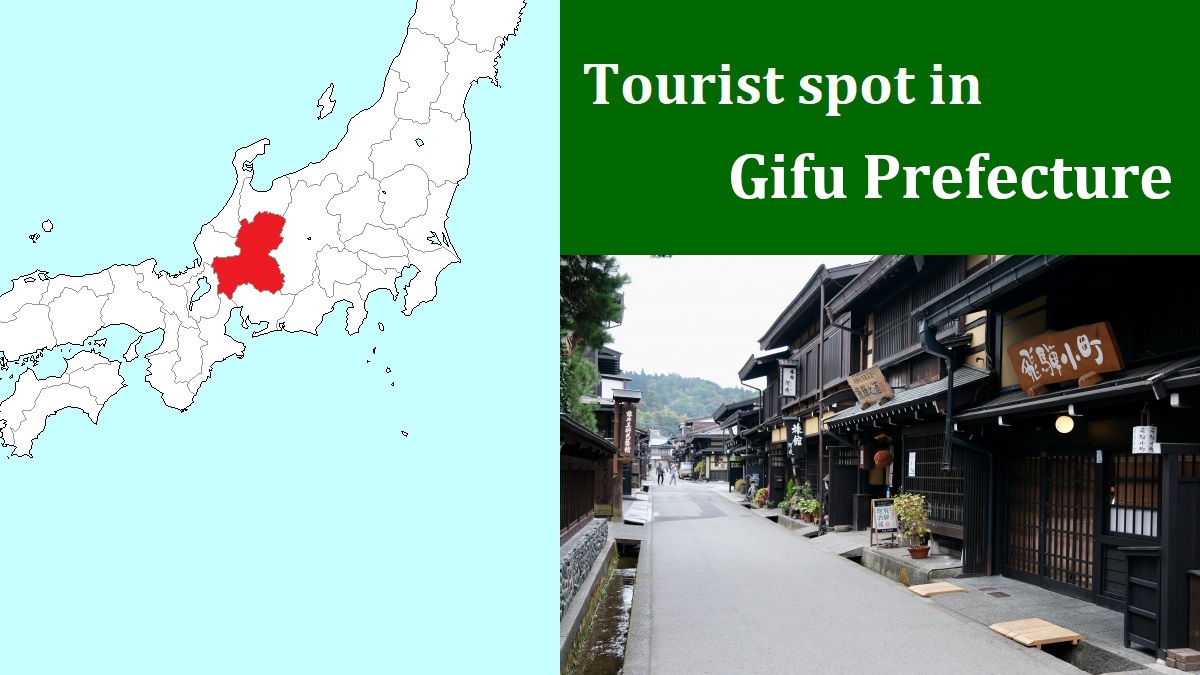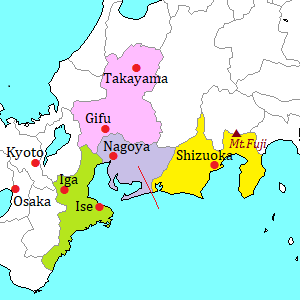Gujo-Hachiman town [郡上八幡]
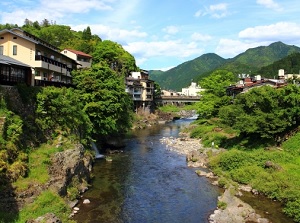
Yoshida River in Gujo-Hachiman
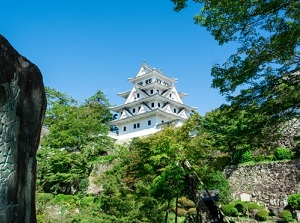
Gujo-Hachiman Castle
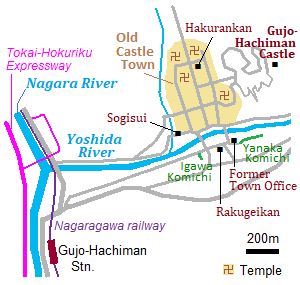
Gujo-Hachiman is the central town in Gujo city, and is located about 40 km north-northeast of Gifu city.
It is roughly in the center of Gifu Prefecture.
Nagara River flows from north to south, and Yoshida River flows into Nagara River from the east.
The main area of Gujo-Hachiman is along a valley formed by Yoshida River, and is near the junction of these rivers.
Gujo-Hachiman Castle (郡上八幡城) was built on the hill in 1559.
The hill is on the north side of Yoshida River, and the castle town was formed at the western foot of the hill in the 17th century.
Later, the town expanded to the south side of the river.
There are many old houses and some Buddhist temples in the town.
The castle was demolished in 1871 after the end of feudal Edo Period, but it was rebuilt in 1933.
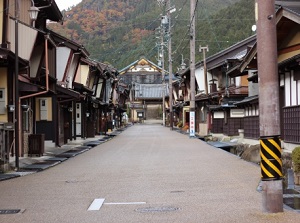
Old town in Gujo-Hachiman
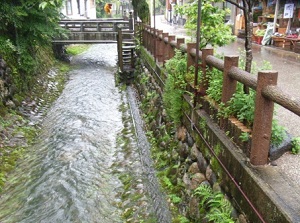
Canal in Gujo-Hachiman
Gujo-Hachiman is known as Water Town.
The water flowing in Nagara River and Yoshida River is very clear, and many waterways are set up in the town.
And the people in Gujo-Hachiman have been used the water cleverly.
There are sinks with a few tiers called "mizubune" in each home and along street.
The clear water from the rivers or springs flows into the sink.
The water in the first sink is used to drink, and the water flows to the second sink.
The water of the second sink is used to wash.
After that, the water used to wash flows into a pond in the house.
The fishes such as carp are bred in the pond, and the food scraps washed away are eaten by the fishes.
Finally, the cleaned water flows into the river again.
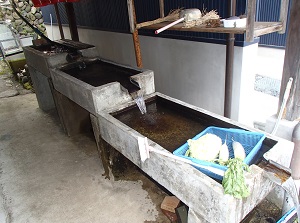
Mizubune in Gujo-Hachiman
Photo by Gifu Prefecture Tourism Federation
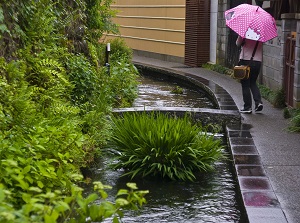
An alley in Gujo-Hachiman
Gujo-Hachiman is famous for Gujo Odori in summer.
It is Bon Festival Dance in this area, and it is held in the evening of over 30 days between mid-July and early September.
Especially, in the Bon Period (August 13 to 16), the dance is done all night.
About 300 thousand visitors come here.
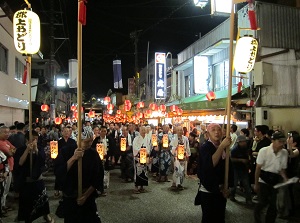
Gujo Odori
Photo by Gifu Prefecture Tourism Federation
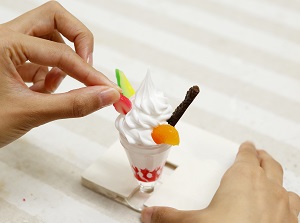
Experience of making replica food
Photo by Gifu Prefecture Tourism Federation
A unique industry in Gujo-Hachiman is the production of replica food.
In Tokyo, we can find the shops selling them in Kappabashi kitchen town.
Gujo-Hachiman has a more than 60% share of the production of them in Japan.
There are several shops in the town, and we can experience to make the replica in most of them.
(Appointment necessary, paid)
The following shop has English website.
The buildings in the early 20th century
There are a few old buildings built in the early 20th century.
These are also the attractive spots in the old town.
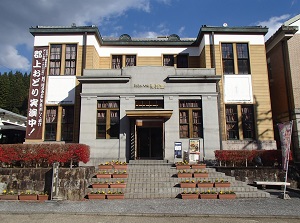
Gujo-Hachiman Hakurankan
Photo by Gifu Prefecture Tourism Federation
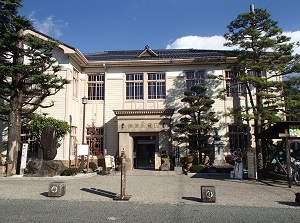
Former Government building Memorial
Photo by Gifu Prefecture Tourism Federation
Gujo-Hachiman Hakurankan (郡上八幡博覧館) is the former tax office built around the 1910s, and is in the old castle town.
It has a museum introducing the history and tradition of Gujo-Hachiman.
And, it shows the demonstration of Gujo Odori a few times a day.
Former Government building Memorial (旧庁舎記念館) is located in the center of the southern side of the Yoshida River.
It was built in 1936, and had been used as the town hall until 1994.
Now it is used a tourist information center.
Gujo-Hachiman Rakugeikan (郡上八幡楽藝館) is a former clinic built in 1904 and had advanced X-ray facility.
It is located near Former Government building Memorial.
Now, it is used as gallery and exhibition hall.
Sôgisui (宗祇水)
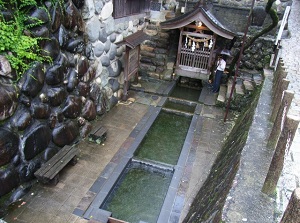
Sogisui
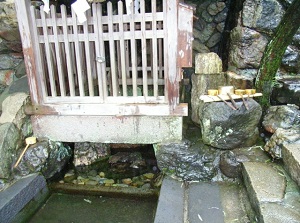
Spring of Sogisui
Sôgisui is a spring of tasty water.
It is located near the southwest edge of old castle town.
In the 15th century, Sogi Iio, a poet, loved this spring and he lived by here.
This is the symbol of this town as "Water Town", and everyone can use the water.
Attractive alleys
In the southern side of Yoshida river, there are two attractive alleys.
("Komichi" means "path", and this word is used for the attractive alley in Gujo-Hachiman.)
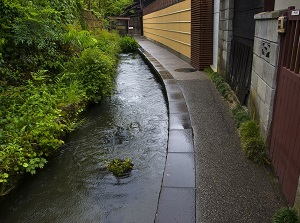
Igawa Komichi
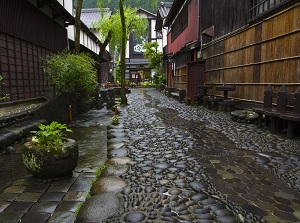
Yanaka Komichi
Igawa Komichi is an narrow alley along a waterway flowing clean water.
Three laundry places are set up by the waterway, and we can sometimes find people in this area doing laundry.
Yanaka Komichi is an alley created with the image of Water Town.
Small 80,000 round stones are paved on the alley.
"80,000" is pronounced as "hachiman" in Japanese!
How to get here
By local train of JR Takayama Line, about 35 minutes from Gifu to Mino-Ota.
Then, by Nagaragawa Railway, about 1 hour and 20 minutes.
From Gujo-Hachiman station, about 1.5 km to the central town.
About 25 minutes on foot.
Or use the small municipal bus or a taxi.
By express bus, about 1 hour and 20 minutes from Gifu, about 1 hour and 30 minutes from Nagoya, about 4.5 hours from Osaka.

